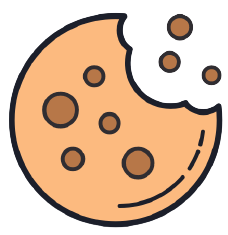Spectacle-Mounted Device Could See Early Signs of Alzheimer’s, Parkinson’s
In modest labs tucked away in the Indian Institute of Science, Bangalore, scientists have engineered a spectacle-mountable device that does more than sharpen your vision — it peers into your brain’s health. This is not science fiction. It’s a working apparatus and could change how doctors diagnose and monitor neurological disorders.
Developed by a team of physicists, engineers and neuroscientists, this innovative eye-tracking device is built around something called a “Fiber Bragg Grating (FBG)” — a type of optical sensor sensitive to minute strain changes.
In simple terms, it tracks how your eye darts about, known as “saccadic movements,” and translates that into data which may offer clues to conditions like Parkinson’s, Alzheimer’s, schizophrenia, and even autism.
EXISTING PROBLEMS:
Why is this important? Because neurological disorders are the second leading cause of death worldwide, and often go undetected for years. Early diagnosis can be life-altering, even life-saving.
“Deviant eye movements can be a sign that something’s amiss in the brain. But most existing eye-trackers are bulky, camera-based and need lab conditions, and can’t be used everywhere or on everyone.”
The device is non-invasive, light, and can be clipped onto any pair of glasses or VR headset. Unlike traditional trackers, it doesn’t rely on visibility of the pupil or infrared cameras. Instead, it reads the tiniest strains in the lower eyelid caused by eye movements — even when your eyes are closed or half shut, allowing it to monitor patients in sleep or those who struggle to keep their eyes open due to illness or age.
HOW IT WORKS:
At the heart of the device is a pair of stainless-steel cantilever arms, each filled with an FBG sensor. When your eyeball moves — up, down, sideways — your lower eyelid tugs ever so slightly. This micro-strain gets picked up by the sensor as a shift in light wavelength. From that, the direction and velocity of the eye movement can be calculated with astonishing accuracy.
And it’s been thoroughly tested. In lab trials with young adult volunteers, the device consistently tracked eye movements across two planes –horizontal and vertical – with a precision matching high-end infrared camera systems.
It was also found to respond reliably across multiple trials. “What’s remarkable is the linearity of the sensor’s response. The strain data translates neatly into angles of eye movement. We saw a correlation coefficient of 0.99 — almost textbook perfect.”
During their study, trails on each subject lasted under three minutes. Before trials begin, the subject calibrates the device by focusing on points at the corners of a screen. Each trial lasted around 20 seconds.
SIMPLY, HIGHLY ACCURATE:
To ensure accuracy, the device undergoes a quick calibration each time it’s used — a common practice in commercial eye-tracking systems. Users are told to look at dots on the corners of a screen while the device records baseline readings. From then on, it can track saccades at different angles with minimal variation, even after multiple sessions.
The potential impact is huge. For one, it offers an affordable, easy-to-use alternative to complex lab equipment. It could be used in rural clinics, at the bedside in hospitals, or integrated into mental health check-ups. Its design also allows for real-time analysis, opening the door to AI integration that categorizes eye movement patterns into risk categories for neurological disorders.
AS GOOD AS THE BEST:
One of the study’s key tests involved comparing the spectacle’s performance against ISCAN, a gold standard infrared eye-tracker. In all three trial sets, the spectacle matched ISCAN’s readings with a 0.99 correlation.
But there’s more. The team also used the data to map what’s known in neuroscience as the “main sequence” — a relationship between the speed and amplitude of eye movements that follows a predictable pattern in healthy individuals.
Deviations can indicate brain abnormalities.
FOR REAL-WORLD USE:
It’s also built with comfort in mind. The design allows the device to adjust for different face sizes, eye shapes, and ethnicities. Its optical fiber sensors are immune to electromagnetic interference, and because they’re passive, they don’t need an external power source at the point of sensing.
Next. the tea, plan to conduct clinical trials with patients suffering from known neurological conditions to further validate the device. Work is underway to develop an AI-powered real-time interface that could help screen people into low, medium, or high-risk categories based on their saccadic behavior.
SACCADES: TINY EYE JUMPS, BIG CLUES
- These are rapid movements of the eye between two fixed points.
- Changes in speed, angle, or pattern of saccades can indicate Parkinson’s, Alzheimer’s, Schizophrenia, Autism, Concussion or brain injury.
NEURO DISORDERS AT A GLANCE:
- 2nd leading cause of death globally (after cardiovascular diseases)
- Early signs often go unnoticed for years.
- Current eye-trackers are bulky, require lab set-ups, rely on pupil visibility and are cost-intensive.





